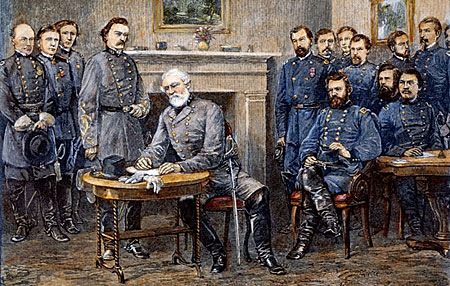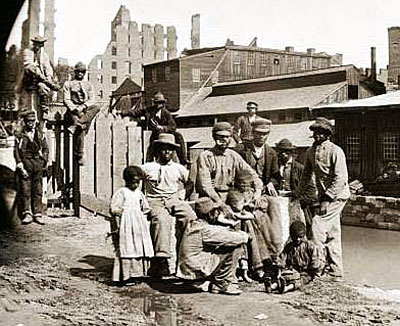Aftermath of the Civil War
The signing of surrender papers at a courthouse in Appomattox, Virginia on April 9, 1865, signified the end of the Civil War. It had been more than two years since President Abraham Lincoln declared enslaved blacks free with the Emancipation Proclamation, and five days before he was assassinated by John Wilkes Booth at the Lincoln Theater.

General Lee Surrenders
War torn land needed to be rebuilt. Over 250,000 Confederate soldiers had died in the war, taking a generation of Southern men away from Southern families. Four million freed black Americans were in need of work, and most could not read or write.

Prior to the Civil War, the Southern economy was agrarian, with thriving plantations, fertile fields, and livestock. The end of the war left burned plantations with no free labor to keep them operational. Much of the land had been seized by the federal government. Necessary infrastructures such as roads, bridges, and railroads had been destroyed all across the South.